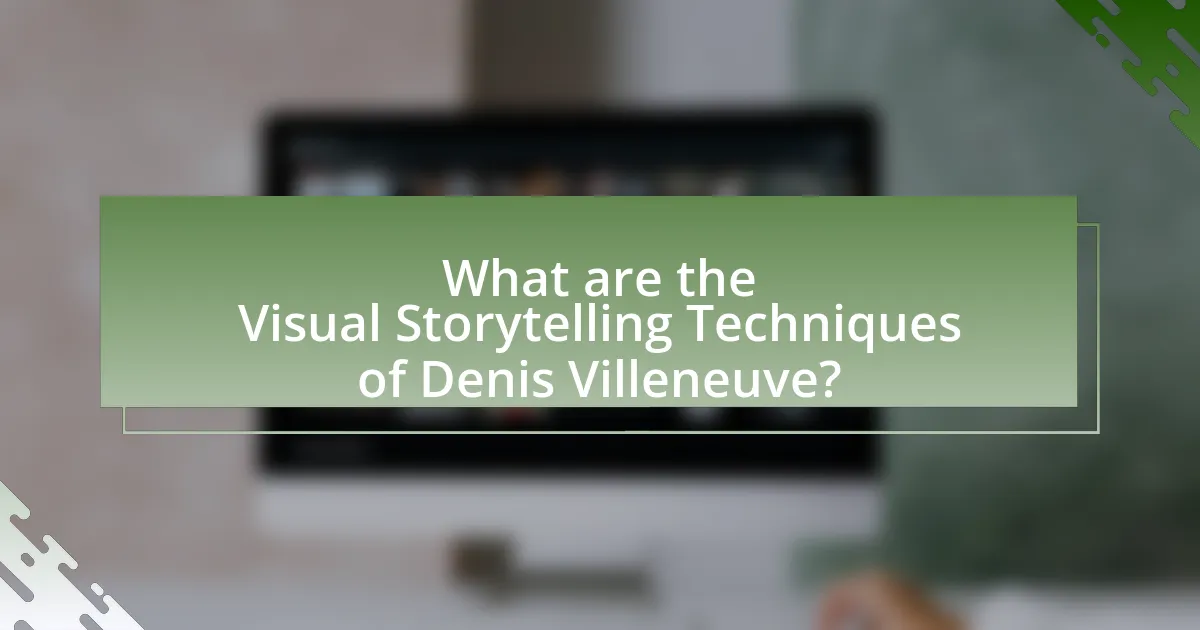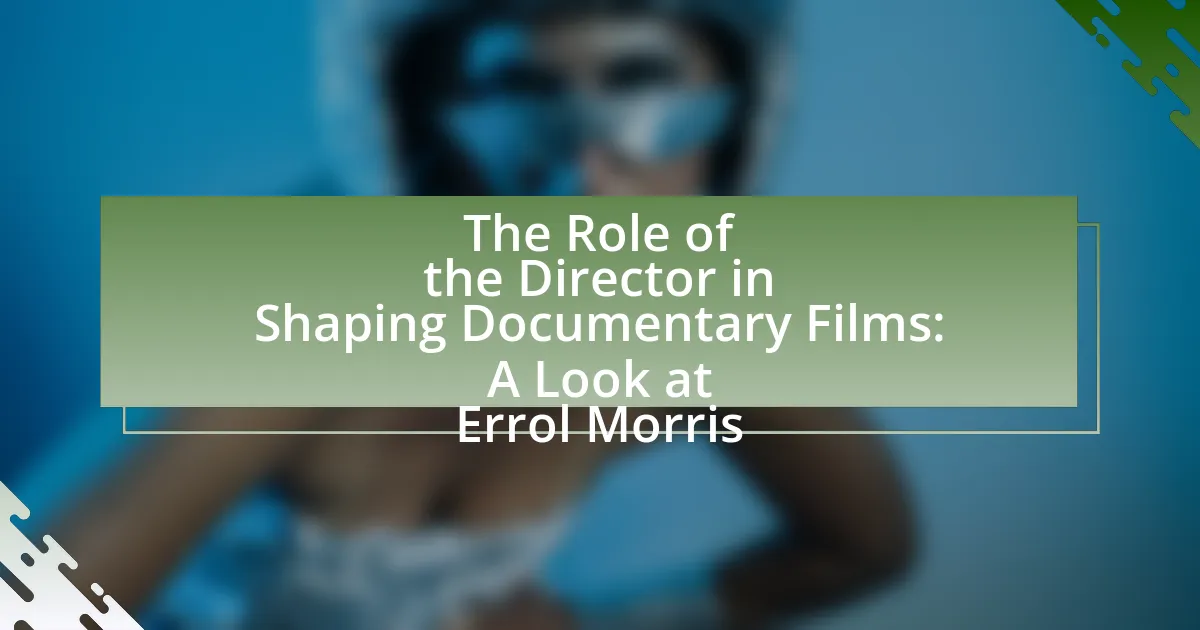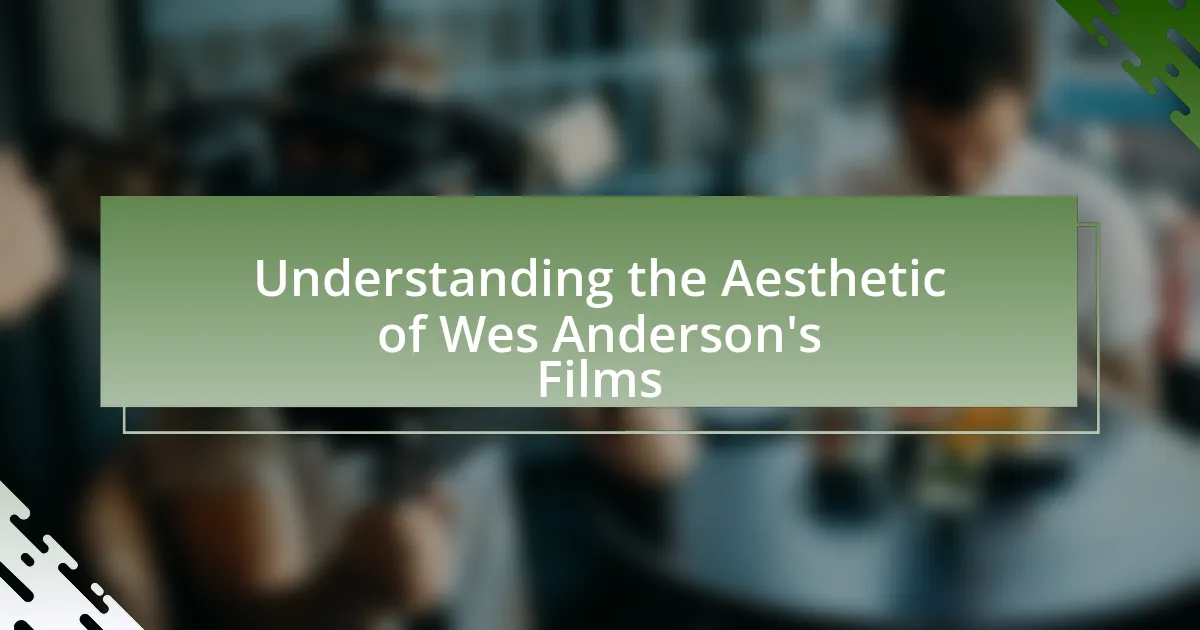Denis Villeneuve is a renowned filmmaker recognized for his exceptional visual storytelling techniques that enhance narrative depth and emotional engagement. This article explores Villeneuve’s use of composition, color palettes, and innovative cinematography, highlighting how these elements contribute to the themes of identity, existentialism, and the human condition in his films. Key examples from works such as “Blade Runner 2049,” “Arrival,” and “Dune” illustrate his meticulous approach to framing, lighting, and sound design, which collectively create immersive cinematic experiences. Additionally, the article discusses the practical applications of Villeneuve’s techniques for aspiring filmmakers and the importance of maintaining originality while drawing inspiration from his style.

What are the Visual Storytelling Techniques of Denis Villeneuve?
Denis Villeneuve employs several visual storytelling techniques that enhance narrative depth and emotional engagement. His use of composition, such as framing and symmetry, creates striking visuals that draw viewers into the story, as seen in “Blade Runner 2049,” where meticulously arranged shots evoke a sense of isolation and wonder. Additionally, Villeneuve often utilizes color palettes to convey mood and themes; for instance, the desaturated tones in “Arrival” reflect the somber nature of its narrative. He also integrates long takes and minimal cuts to build tension and immerse the audience in the moment, exemplified in the intense sequences of “Sicario.” Furthermore, Villeneuve’s collaboration with cinematographer Roger Deakins results in visually stunning imagery that serves the story, reinforcing the emotional stakes and character arcs throughout his films.
How does Denis Villeneuve utilize visual elements in his films?
Denis Villeneuve utilizes visual elements in his films through meticulous composition, striking color palettes, and innovative cinematography. His films often feature wide shots that emphasize scale and isolation, as seen in “Arrival,” where the vast landscapes enhance the themes of communication and understanding. Villeneuve employs a distinct color grading technique, using muted tones to evoke mood and atmosphere, exemplified in “Blade Runner 2049,” where the desaturated colors reflect a dystopian reality. Additionally, he collaborates with cinematographer Roger Deakins to create visually arresting imagery, utilizing depth of field and lighting to guide viewer focus and enhance narrative tension. This combination of techniques reinforces the emotional weight of the story and immerses the audience in the film’s world.
What role does cinematography play in Villeneuve’s storytelling?
Cinematography plays a crucial role in Denis Villeneuve’s storytelling by enhancing emotional depth and visual narrative. Villeneuve employs striking visuals, such as expansive landscapes and meticulous framing, to evoke specific feelings and immerse the audience in the film’s atmosphere. For instance, in “Blade Runner 2049,” the use of color and light contrasts not only establishes the dystopian setting but also reflects the internal struggles of the characters. This visual approach reinforces themes of isolation and identity, demonstrating how cinematography is integral to conveying complex narratives in Villeneuve’s films.
How does color palette influence the mood in Villeneuve’s films?
The color palette in Denis Villeneuve’s films significantly influences the mood by evoking specific emotional responses and enhancing thematic elements. For instance, in “Blade Runner 2049,” the use of desaturated colors and stark contrasts creates a sense of isolation and dystopia, reflecting the film’s exploration of identity and humanity. Similarly, in “Arrival,” the warm tones associated with the alien spacecraft contrast with the cooler colors of the surrounding environment, symbolizing hope amidst uncertainty. These deliberate choices in color not only set the emotional tone but also reinforce the narrative, making the visual experience integral to the storytelling.
What themes are commonly explored through visual storytelling in Villeneuve’s work?
Denis Villeneuve commonly explores themes of identity, existentialism, and the human condition through visual storytelling. His films often delve into the complexities of personal and collective identity, as seen in “Arrival,” where communication and understanding shape human connections. Villeneuve also examines existential questions, particularly in “Blade Runner 2049,” where characters grapple with their purpose and the nature of reality. Additionally, the human condition is a recurring theme, highlighted in “Dune,” where survival and morality are central to the narrative. These thematic explorations are reinforced by Villeneuve’s distinctive visual style, which enhances the emotional and philosophical depth of his stories.
How does Villeneuve convey existential themes visually?
Denis Villeneuve conveys existential themes visually through the use of stark contrasts, expansive landscapes, and meticulous framing. His films often feature desolate environments that reflect characters’ internal struggles, such as the barren landscapes in “Arrival” and “Dune,” which symbolize isolation and the search for meaning. Additionally, Villeneuve employs close-up shots to capture the emotional weight of characters’ decisions, emphasizing their existential dilemmas. The use of lighting, particularly shadows and muted colors, further enhances the sense of uncertainty and introspection, as seen in “Blade Runner 2049,” where the visual palette underscores themes of identity and existence. These techniques collectively create a visual language that invites viewers to engage with the profound questions of life and purpose.
What visual motifs recur in Villeneuve’s filmography?
Denis Villeneuve’s filmography features recurring visual motifs such as the use of expansive landscapes, contrasting light and shadow, and the exploration of isolation. These motifs serve to enhance the emotional depth and thematic complexity of his narratives. For instance, in “Arrival,” vast open spaces symbolize the vastness of time and communication, while in “Blade Runner 2049,” the interplay of light and shadow reflects the moral ambiguity of the characters. Additionally, the theme of isolation is visually represented through framing and composition, often placing characters in solitary environments to emphasize their emotional states. These consistent visual elements contribute to Villeneuve’s distinctive storytelling style.
How does Denis Villeneuve’s approach differ from other filmmakers?
Denis Villeneuve’s approach to filmmaking is characterized by a meticulous focus on visual storytelling, which sets him apart from many other filmmakers. He emphasizes the use of striking imagery, often employing wide shots and minimal dialogue to convey emotion and narrative depth, as seen in films like “Arrival” and “Blade Runner 2049.” Villeneuve’s collaboration with cinematographer Roger Deakins further enhances this visual style, creating a distinct atmosphere that immerses viewers in the story. His commitment to practical effects over CGI, as demonstrated in “Dune,” also reflects a desire for authenticity that contrasts with the more digital-heavy approaches of other contemporary directors.
What unique techniques does Villeneuve employ compared to his contemporaries?
Denis Villeneuve employs unique techniques such as meticulous world-building, a focus on visual composition, and the use of sound design to enhance emotional depth, setting him apart from his contemporaries. His films, like “Blade Runner 2049” and “Dune,” showcase expansive landscapes and intricate details that immerse viewers in the narrative. Villeneuve’s collaboration with cinematographer Roger Deakins emphasizes striking visuals, utilizing natural light and color palettes to evoke mood and atmosphere. Additionally, his innovative soundscapes, often crafted in partnership with sound designer Theo Green, create an auditory experience that complements the visual storytelling, enhancing the overall impact of his films.
How does Villeneuve’s use of space and composition set him apart?
Denis Villeneuve’s use of space and composition distinguishes him through meticulous framing and a profound understanding of visual storytelling. His films often feature expansive landscapes that evoke a sense of isolation and scale, as seen in “Arrival” and “Dune,” where vast environments amplify the emotional weight of the narrative. Villeneuve employs symmetry and negative space to create tension and focus, guiding the viewer’s attention to critical elements within the frame. For instance, in “Blade Runner 2049,” the composition emphasizes the characters’ emotional states against the backdrop of a dystopian world, enhancing the thematic depth. This deliberate manipulation of space and composition not only enhances the visual experience but also reinforces the underlying themes, setting Villeneuve apart as a master of cinematic storytelling.
In what ways does Villeneuve’s narrative style influence his visual storytelling?
Denis Villeneuve’s narrative style significantly influences his visual storytelling by emphasizing emotional depth and thematic complexity. His use of slow pacing allows for character development, which is visually represented through meticulous framing and composition. For instance, in “Arrival,” the narrative’s focus on communication and time is mirrored in the film’s visual structure, where non-linear storytelling is complemented by striking imagery that evokes a sense of wonder and introspection. Additionally, Villeneuve often employs minimal dialogue, relying on visual metaphors and symbolism, as seen in “Blade Runner 2049,” where the desolate landscapes reflect the characters’ internal struggles. This synergy between narrative and visuals enhances the audience’s emotional engagement and understanding of the story.
Why is Denis Villeneuve considered a master of visual storytelling?
Denis Villeneuve is considered a master of visual storytelling due to his exceptional ability to create immersive cinematic experiences that blend stunning visuals with profound thematic depth. His films, such as “Blade Runner 2049” and “Arrival,” showcase meticulous attention to detail in cinematography, utilizing composition, color, and lighting to evoke emotion and enhance narrative. Villeneuve collaborates with renowned cinematographers like Roger Deakins, whose work on “Blade Runner 2049” earned an Academy Award, exemplifying the high standards of visual artistry in his films. Additionally, Villeneuve’s skillful pacing and use of silence amplify the visual impact, allowing audiences to engage deeply with the story.
What critical acclaim has Villeneuve received for his visual techniques?
Denis Villeneuve has received significant critical acclaim for his visual techniques, particularly for his ability to create immersive and striking imagery. Critics have praised his use of composition, lighting, and color to enhance storytelling, as seen in films like “Blade Runner 2049,” which won the Academy Award for Best Visual Effects and was lauded for its stunning cinematography by Roger Deakins. Additionally, Villeneuve’s work in “Dune” garnered widespread recognition, including six Academy Awards, with specific praise for its visual grandeur and innovative world-building, showcasing his mastery in visual storytelling.
How do audiences respond to Villeneuve’s visual storytelling methods?
Audiences respond positively to Denis Villeneuve’s visual storytelling methods, often praising his ability to create immersive and emotionally resonant experiences. His use of striking cinematography, such as the expansive landscapes in “Dune,” captivates viewers and enhances narrative depth. Critics and audiences alike highlight how Villeneuve’s meticulous attention to detail and composition evoke strong emotional reactions, as seen in films like “Arrival,” where visual elements complement the story’s themes of communication and time. This combination of visual artistry and thematic exploration leads to a profound engagement with the material, making his films memorable and impactful.
What are the practical applications of Villeneuve’s visual storytelling techniques?
Villeneuve’s visual storytelling techniques are practically applied in enhancing narrative depth and emotional engagement in film. His use of composition, lighting, and color palettes creates immersive worlds that resonate with audiences, as seen in “Blade Runner 2049,” where the stark contrasts and vibrant hues reflect the film’s themes of identity and memory. Additionally, his meticulous pacing and framing guide viewer attention, allowing for a more profound connection to character arcs, exemplified in “Arrival,” where visual cues align with the narrative’s exploration of time and communication. These techniques are utilized by filmmakers to evoke specific emotional responses and to convey complex themes effectively.
How can aspiring filmmakers learn from Villeneuve’s techniques?
Aspiring filmmakers can learn from Denis Villeneuve’s techniques by analyzing his use of visual composition, pacing, and thematic depth. Villeneuve meticulously crafts each frame, employing symmetry and color to evoke emotions and enhance storytelling, as seen in films like “Blade Runner 2049” and “Arrival.” His deliberate pacing allows tension to build, creating a more immersive experience, which can be studied through his use of long takes and minimal dialogue. Additionally, Villeneuve’s exploration of complex themes, such as identity and humanity, encourages filmmakers to infuse their narratives with deeper meanings, as demonstrated in “Dune.” By studying these elements, aspiring filmmakers can refine their own storytelling skills and visual aesthetics.
What specific visual strategies can be adopted in independent filmmaking?
Independent filmmakers can adopt specific visual strategies such as utilizing natural lighting, employing handheld camera techniques, and focusing on composition to enhance storytelling. Natural lighting creates a realistic atmosphere, which is often more relatable for audiences, while handheld camera work adds a sense of immediacy and intimacy to scenes. Additionally, careful composition, including the rule of thirds and framing, can guide viewer attention and evoke emotional responses. These strategies are effective in conveying themes and character emotions, as seen in the works of Denis Villeneuve, who often employs these techniques to create immersive narratives.
How can understanding Villeneuve’s style enhance a filmmaker’s narrative skills?
Understanding Denis Villeneuve’s style can significantly enhance a filmmaker’s narrative skills by providing insights into his unique approach to visual storytelling, pacing, and character development. Villeneuve often employs a meticulous visual composition that emphasizes mood and atmosphere, which can teach filmmakers the importance of visual elements in conveying emotional depth. His use of slow pacing allows for character introspection, demonstrating how time can be manipulated to build tension and engagement in a narrative. Additionally, Villeneuve’s ability to weave complex themes into his stories, such as identity and morality, showcases the effectiveness of layered storytelling. By analyzing his films, filmmakers can learn to create more nuanced narratives that resonate with audiences on multiple levels.
What common pitfalls should filmmakers avoid when emulating Villeneuve’s style?
Filmmakers should avoid superficial imitation of Denis Villeneuve’s visual style, as it can lead to a lack of authenticity in storytelling. Villeneuve’s work is characterized by deep thematic exploration and emotional resonance, which requires filmmakers to prioritize narrative depth over mere aesthetic replication. For instance, his films often utilize long takes and minimal dialogue to build tension and atmosphere; filmmakers should not overlook the importance of pacing and character development in their own narratives. Additionally, filmmakers should refrain from overusing visual effects without purpose, as Villeneuve’s effective use of visuals serves to enhance the story rather than distract from it. By focusing on these elements, filmmakers can create a more genuine homage to Villeneuve’s unique approach to visual storytelling.
How can filmmakers maintain originality while drawing inspiration from Villeneuve?
Filmmakers can maintain originality while drawing inspiration from Denis Villeneuve by integrating their unique voice and perspective into their storytelling. Villeneuve is known for his atmospheric visuals and complex narratives, which filmmakers can appreciate and learn from without replicating. By analyzing his techniques, such as the use of silence and pacing, filmmakers can adapt these elements to fit their own themes and styles. For instance, Villeneuve’s work often emphasizes character development through visual metaphors; filmmakers can similarly employ visual storytelling that reflects their personal experiences or cultural backgrounds, ensuring their work remains distinct. This approach allows filmmakers to honor Villeneuve’s influence while creating original content that resonates with their audience.
What are the risks of overusing visual techniques in storytelling?
Overusing visual techniques in storytelling can lead to a dilution of narrative depth and emotional engagement. When visuals dominate, audiences may become desensitized, reducing their ability to connect with characters and themes. Research indicates that excessive reliance on visuals can overshadow dialogue and character development, resulting in a superficial experience. For instance, a study published in the Journal of Visual Culture highlights that narratives heavily reliant on imagery often fail to convey complex emotional arcs, leading to a less impactful story. Thus, while visual techniques are powerful, their overuse can compromise the storytelling experience.




